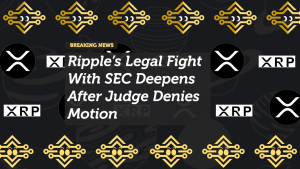Our PCB Thickness as well as Other Technical Parameters
Because 2006, MOKO Modern technology is specialized in the manufacturing of published circuits and also in express times. Depending upon the PCB thickness or combination with other options, we make in the most effective rate variety in the More Innovation location (non-pool):.
Best cost range (swimming pool):.
0.80 mm, 1.00 mm, 1.55 mm as well as 2.40 mm product density.
Extra technology (without pool):.
0.50 mm, 0.80 mm, 1.00 mm, 1.55 mm, 2.00 mm, 2.40 mm and also 3.20 mm product density.
PCB thickness of MOKO Printed Circuit Board Assembly we can do.
In addition to the setups suggested on our site, we are also able to produce:.
– Stiff circuits ranging from 16 to 32 layers.
– Greater material as well as copper thicknesses.
– HDI circuits; with laser boring, blind and hidden openings.
– Adaptable circuits from 6 to 10 layers.
– Flex-rigid up to 12 layers, semi-flex.
– Circuits with incorporated resistors as well as capacitors.
– A lot more technological subjects: Arlon, Rogers, FR408HR, and so on
. HDI Microvia published motherboard.
At MOKO Innovation we can provide you the adhering to HDI Microvia material densities, depending upon the layer structure:.
Layer framework 1-x-1 (4 layers in 0.50 mm, 0.80 mm, 1.00 mm or 1.55 mm product thickness and 6 and 8 layers in 1.00 mm or 1.55 mm product density) Layer framework 1-xb-1 (4, 6 as well as 8 layers in 1.00 mm or 1.55 mm product density).
Rigid-flex published motherboard.
At MOKO Modern technology we offer the following PCB material densities:.
Layer structure 1F-1Ri: 1.00 mm or 1.55 mm product density Layer framework 1F-3Ri: 1.00 mm or 1.55 mm product density Layer framework 1F-5Ri: 1.00 mm or 1.55 mm material density.
Printed circuit boards.
Layer structure 1F-Ri consisting of reinforcement 0.30 mm Layer structure 2F-Ri including support 0.30 mm.
The FR4 support is only put on one side of PCBs.
Please send us a query utilizing our inquiry kind for printed circuit card. We pass them on to the sales department.
Multi-layer published circuit card.
ParameterDescription.
Base materialFR2, FR3, FR4, CEM1, CEM3, others on demand.
Layers– numberMax. 22.
Maximum board size480 x 580 mm, special: 584.2 x 1041.4 mm.
Minimum PCB thickness0.1 mm.
Maximum PCB thickness3.2 mm, special: 6.50 mm.
Copper starches18 or 35 µm, specifically: 9 µm, 210 µm, approximately max. 350 µm.
Minimum opening diameter0.2 mm (mechanically pierced).
Min. Track width100 µm.
Min. Range in between conductor tracks100 µm.
mechanical machiningscratch, mill.
Surface finishCopper, HASL, chem. Nickel/ Gold, Entek (OSP).
Solder stop masksDry movie mask, UV-hardened solder withstand, detachable solder mask (in common colors).
Noting printingIn all memorable colors.
Style optionsBond areas, SMD.
various other finishing optionsCarbon layer, opening metallization with silver.
Lay-up Framework (example).
PCB thickness lay-up framework.
Our technical capacities for PCB manufacturing.
To day, our team has the best tools as well as innovations for the manufacture of high-grade PCB board. We are able to use high volume PCB, likewise approve your prototype PCB.
Thanks to the tools we have in our factory, we can provide you a very total variety of options for your published circuits. On this web page, you will certainly locate all our capacities as well as therefore, all the PCB that we are capable of producing.
Requirements Our Requirement CapacitiesOn Request.
Variety of layers 1 to 32 layers as much as 42 layers.
Product density (SF as well as DF) 0.2 mm to 5.0 mm<0.2mm or> 5.0 mm.
Multilayer material thickness0.35 mm to 5.0 mm <0.35mm or> 5.0 mm.
Tolerance on the density of the product If <1.0mm: +/- 0.1mm, if> 1.0 mm: +/- 10%.
Copper density, outer layer17, 35, 70, 105, 140, 175µm 210 to 350µm.
Copper density, interior layer17, 35, 70, 105, 140, 175, 210µm.
Kind of base materialFR4, TG130 ° C, TG150 ° C, TG170 ° CTG200 ° C, TG230 ° C, Arlon, Teflon.
FinishOSP, LF-HASL, chemical gold (ENIG), ENEPIG, silverHAL tin with a lead finish.
Tin immersion thickness0.8 to 1.5 µm
. Lead-free HAL finish thickness ≥ 0.4 µm
. HAL finish thickness with lead ≥ 0.4 µm
. On ENIG coating– nickel Ni thicknessfrom 3 to 5µm.
On ENIG surface– Au gold thicknessfrom 0.025 to 0.127 µm
. On tough gold coating– nickel Ni thicknessfrom 3 to 5µm.
On tough gold surface– Au gold thicknessfrom 0.125 to 1.3 µm
. Gold link Yes.
Optimum size for a PCB SF as well as DF546 x 1198mm.
Optimum dimension for a multilayer PCB546 x 1198mm.
The minimum size of a PCB10 x 10mm.
The minimum size of a PCB on a 10 x 10mmblank.
Minimum size of a PCB5mm.
Space with various sorts of circuitsYes.
Fifty percent metalized opening at the edge of the cardYes.
Metallization of the trancheYes.
Loading copper viasYes.
Electric testMobile probe if <3sqm with nail bed tester if> 3sqm.
Plugging with copper (e.g. for via-in-pad) Yes.
Peelable mask Belowbelow, the 2 sides.
Carbon print/ mini variety to array distanceYes/ 0.7 mm.
Chamfer at the edge of the card Yes.
Chamfer angle possible20 °, 25 °, 30 °, 45 °.
Grooving jump Yes.
Grooving deepness tolerance+/- 0.075 mm.
Milling on the Z-axisYes, resistance +/- 0.2 mm.
Milled holeYes.
Unique piling for multilayer Yes.
Minimum drilling 0.15 mmOn requestfor > 10: 1.
Mini pellet dimension on copper 35µm0.2 mm larger than the by means of.
Mini pellet size on copper 70µm & 105µm0.4 mm more than through.
Mini pellet dimension on copper 140µm & 210µm0.5 mm more than the through.
Possible boring diameter0.2 to 6.3 mm <0.2 mm.
Minimum void between 2 openings (edge to side) 0.125 mm.
Via buried mini (completed size) 0.2 mm 0.15 mm.
Via mini blind (completed diameter) 0.2 mm 0.15 mm.
Minimum reducing width0.8 mm.
Tiniest indoor angle (not metal) 0.4 mm.
Internal milling; minimum width0.95 mm.
Track size and minimum area of 18µm0.076 mm.
Track width and also minimal area on 35µm0.076 mm.
Track width as well as minimal room over 70µm0.178 mm.
Track width and also minimum area over 105 µm 0.254 mm.
Distance between copper as well as internal milling range0.20 mm internal layers, 0.25 mm exterior layers.
Range in between the copper surface area and also card side (milling) 0.20 mm internal layers, 0.25 mm external layers.
Distance mini copper variety as well as board side (V-cut) 0.45 mm.
Savings varnish colorGreen, white, black, red, blue.
Eco-friendly financial savings varnish, minimum width0.1 mm.
Various other color financial savings varnish, minimum width0.127 mm.
Green savings varnish, minimum size on a round arc0.1 mm.
Environment-friendly cost savings varnish, minimum distance from a copper range0.15 mm more than copper.
Financial savings varnish, text height smaller0.21 mm.
Screen printing colorBlack and also white Yellow and also red.
Screen printing; tiniest lineWidth: 0.1 mm, height: 0.6 mm.
Display printing; minimal space in between 2 lines 0.1 mm.
Screen printing; minimum distance from a copper range0.05 mm.
Max countered of an opening compared to its reference0.075 mm.
Via metallized; tolerance (size approximately 3mm)+/- 0.075 mm.
Via metallized; tolerance (diam above 3mm)+/- 0.075 mm.
Via non-metallic (diameter as much as 6mm)+/- 0.05 mm.
Via non-metallic (size listed below 6mm) +/- 0.05 mm.
External measurement of the circuit/ blank+/- 0.1 mm.
Flatness0.2% to 0.75%.
Spin 0.2% to 0.75%.
RoHS compliant base materialAnyUnless HAL with Pb is required!
Completion RoHS compliantAny.
IPC common taken on IPC-A-600G– Class 2, course 3.
Base material UL compliantAny.
HULLABALOO EN ISO 9001 qualification Yes.
HUBBUB EN ISO 14001 certificationYes.
RACKET EN ISO 16949 qualification Yes.
Production time for SF and DF circuitsFrom 4 OJ (< 1sqm) to 11 OJ (more than 10sqm) Express in 48H.
Production time for circuits 4 to 8 layersFrom 6 OJ (< 1sqm) to 14 OJ (more than 10sqm) Express in 48H.
Production time for circuits 10 to 14 layersFrom 9 OJ (< 1sqm) to 18 OJ (more than 10sqm) Express in 120H.
Production time for circuits 16 to 24 layersFrom 12 OJ (< 1sqm) to 24 OJ (greater than 10sqm) Express in 150H.
MOKO Innovation has extensive PCB setting up placing capacities.
– Automated and hand-operated fine pitch SMT.
– Multi-layer circuit boards, flex boards.
– BGA with X-ray as well as revamp feature.
– Lead-free assembly.
– Wave soldering.
– Circuit examination.
– Practical examination.
– Protective varnish.
– Burn-in.
– Inline AOI evaluation system.
– XRAY examination AOI examination.
94V0 PCBA production scalability approximately.
We incorporate innovative procedures with very qualified sources. With the leading, modern innovation and management system for PCB setting up.
SMT process (RoHS suitable) approximately:.
1,0201 chip dimension.
2. 12 mils (IC) pitch.
3. Flip Chip (Controlled Collapse Chip Link)– a range of 5 mil.
4. Quad Apartment Plan (QFP)– Pitch 12 mils.
THT procedure (wave soldering procedure) (RoHS compliant) up to:.
1. Solitary side wave soldering.
2. SMT & THT blending process.
Base materialFR4production control of dataincluded.
PCB thickness1-4 layers0.8 to 2.4 mm usage from one fileincluded.
PCB thickness6 layersfrom 1.0 mm structure from different files50,– EUR.
Copper structure35 μmDelivery of Gerber data for the solder paste pattern (on demand) included.
Tiniest drilling diameter0.3 mmDelivery of the lasered solder paste stencilEUR 240.
Minimum track width0.1524 mm (6 mils) B-printEUR 50 per side.
Surface area finishHot-Airlead-free E-testsee price list.
Solder-resistone-sidedtwo-sided eco-friendly UL marking (on demand) included.
Milling program with up to 24 adjustments of directionincludingmilling program with greater than 24 modifications of directionEUR 50.
A best outcome can just be accomplished with your help:.
CAD information in GERBER; Extended GERBER, Eagle, or TARGET3001!
Drill file in Excellon or SIEB & MEYER style.
Shipment of your information by 9:00 a.m. if the schedule day need to count as a functioning day.
Please divide the boring information according to plated through as well as not layered with.
Indicate the regularity of each kind of PCB on a panel as well as the number of different types on a SPOT PRINT.
Send out just one file per layout level, which consists of all types at the same time, even if you desire more than one PCB of this type.
Send us a shape drawing for each and every variety.
The motherboard are supplied individually and milled out.
Scoring benefits in the Galvano edge at no added charge.
If you want shipment in the benefit, your advantage setup have to correspond to our basic production possibilities and tolerances.
Only apertures as much as max. Use 999 ml. Please fill up larger ground areas according to standard.
If the stroke width of the writing in copper is <0.1524 mm or for B-printing <0.2 mm, no legibility can be guaranteed.
PCB manufacturing resistances.
Outside tolerances of multilayer frameworks.
Printed circuit board makers mention a density tolerance of +/- 10%.
The built-up copper layer also has a tolerance of +/- 10%. This must be taken into account when computing the track thickness.
The milling tolerances for external shapes are +/- 0.1 mm to a dimension of 100mm. From 100mm this can be as much as +/- 0.2 mm.
The thicker the material density of the multilayer, the more dimensionally secure the core/ completed ML. The thicker the prepreg, the a lot more dimensionally steady the textile. The thinner the prepreg, the higher the material content. The thicker the inner layer copper, the extra or more resinous prepregs have to be utilized to load the etched away copper surface areas.
If you need smaller sized tolerances due to the installation, we ask you to show this beforehand.
Tolerances of plated-through hole patterns (DK/ PTH).
The diameter resistance is specified with -0.05/ + 0.1 mm.
The tolerances in between the conductor pattern as well as the hole pattern are specified as complies with:.
External contour <30mm +/- 0.05 mm.
Outside shape <150mm +/- 0.1mm.
Outer contour> 150mm +/- 0.15 mm.
Layer-thick paint.
Please additionally note the layer thicknesses when paint when specifying PCB thickness.
The lacquer layer is normally in between 40µm– 80µm thick. This thickness has to be counted when defining the PCB density. I.e. a PCB with a density of 1.5 mm can be up to 1.73 mm close resistance as well as varnish.
Resistances.
The following diameter tolerances apply to metalized bores according to PERFAG *:.
For non-metalized openings, the complying with diameter resistances apply according to PERFAG *:.
Nominal size d resistance.
d = <2.0 mm ± 0.10 mm.
d> 2.0/ d = <5.3 mm ± 0.15 mm.
d> 5.3 mm ± 0.20 mm.
Nominal diameter d resistance.
d = <5.3 mm ± 0.05 mm.
d> 5.3 mm ± 0.10 mm.
Decreases.
On request, we can additionally make countersinks on your circuit card. The complying with information is needed to countersink the circuit boards:.
Hole diameter (DB).
Countersink Diameter (DS).
Lowering side (BS or LS).
Openings.
Exploration size.
All drill diameters from 0.15 mm in 0.05 mm actions can be produced (from drill size 2.0 mm in 0.1 mm steps). For drill sizes under 0.5 mm (= last diameter 0.4 mm), a surcharge will be added to the PCB prices. All openings are pierced 0.1 mm larger than defined in the device checklist in order to comply with the hole tolerances (specifically after metallization). If you have actually currently taken this enlargement into account when creating the layout, this should be kept in mind in the order. All holes (DK as well as NDK) must be combined in one drill file. Non-plated with holes (NDK) should be noted. You can locate more details on this in the chapter Information layouts.
Bores with a last diameter from 6.10 mm are nippled or machine made.
The tiniest drilling size relies on the PCB density, which is listed in the table listed below.
PCB thickness minutes. Hole size (ended up hole size).
as much as 1.0 mm 0.05 mm.
> 1.0 to 1.6 mm 0.15 mm.
> 1.6 mm to 2.0 mm 0.30 mm.
> 2.0 mm to 2.4 mm 0.40 mm.
> 2.4 mm to 3.2 mm 0.50 mm.
Restraining rings for non-metalized holes.
In order to ensure a circumferential ring around the holes, the adhering to parameters have to be observed in the design according to PERFAG *:.
Remaining rings for metalized holes.
In order to ensure a circumferential ring around the holes, the following specifications should be observed in the format according to PERFAG *:.
The specified worths are minimal values, the largest possible residual ring must be focused on in order to increase the useful reliability of the circuit card. A bigger ring will certainly lead to an extra safe solder joint.
Hidden vias.
Buried vias can be made use of to make links between the inner layers that have no contact with the outer layers. The holes for every connection-level can either be specified as a separate device in the boring program or as a separate drill documents.
Asked for apply for PCB setting up.
— In order to provide you with the most effective and also accurate deal possible for the manufacture of the requested device, we ask you to supply us with the following details.
1. Gerber file, PCB data, Eagle documents or CAD data are all permitted.
2. A thorough components listing (BOM).
3. Clear photos of PCB or PCBA instances for us.
4. Quantity and also distribution needed.
5. Test method for PCBA to guarantee 100% top quality products.
6. Circuit representation files for PCB style when a feature test requires to be carried out.
7. An example, if available, for far better procurement.
8. CAD declare situation manufacturing, if needed.
9. Total wiring and also assembly drawing with any kind of unique assembly guidelines.













